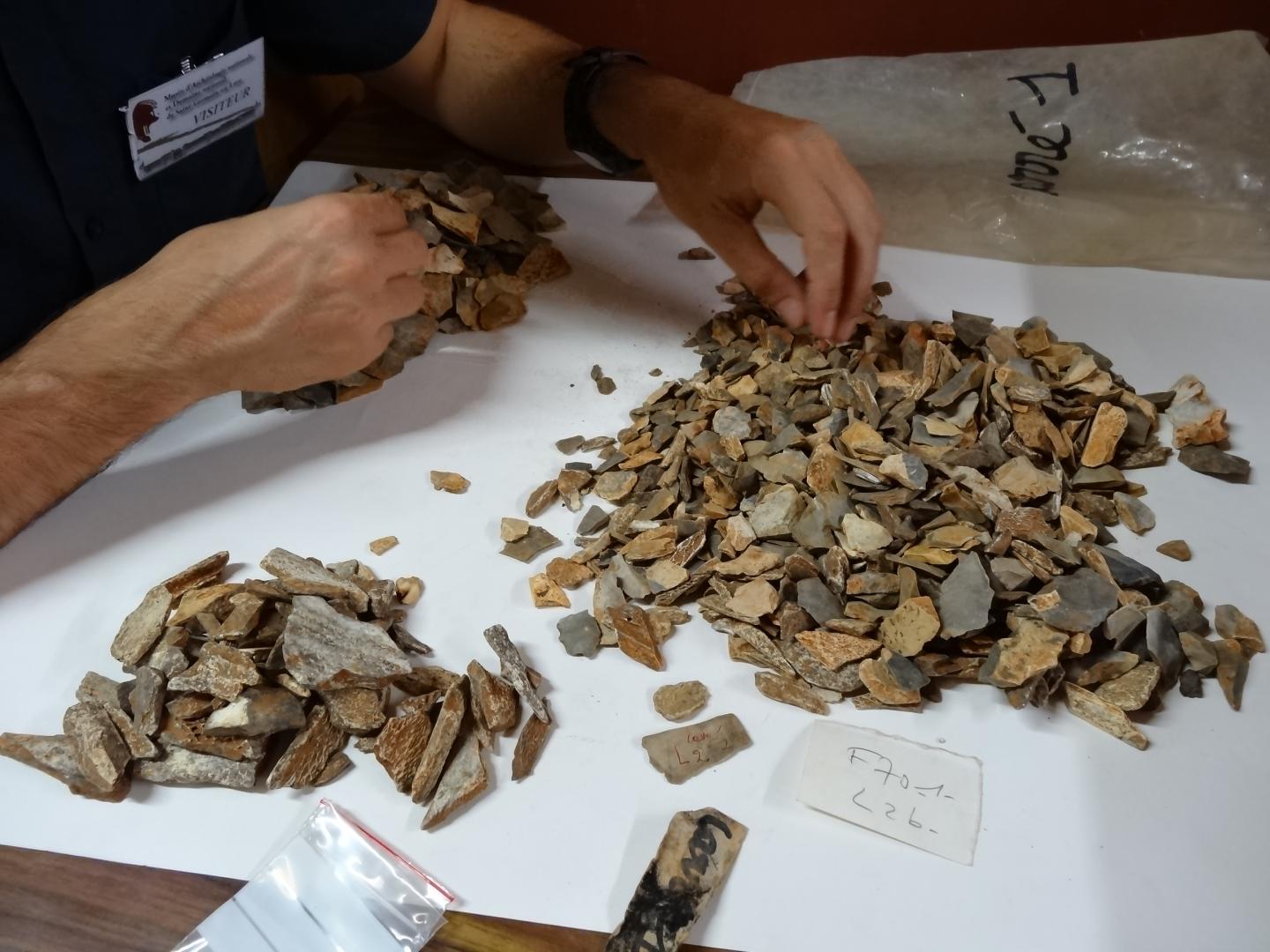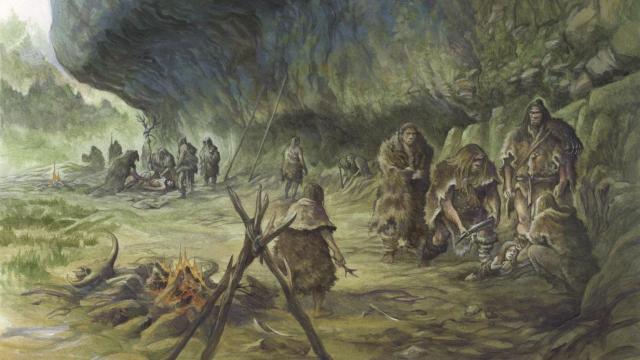A thorough re-analysis of a skeleton belonging to a 2-year-old Neanderthal and the archaeological site in which it was discovered some 50 years ago is providing some of the strongest evidence yet that Neanderthals deliberately buried their dead.
I must admit, this new study came as a bit of a surprise to me, in that I assumed this debate was over — that archaeologists were in general agreement that Neanderthals buried their dead. But scientists can be a stubborn bunch, and necessarily so, when the evidence seems sketchy.
Such is the case here. Since the early 20th century, dozens of seemingly buried Neanderthal skeletons have been found, pointing to the funeral practice. Trouble is, most of these bones were uncovered over 100 years ago when archaeological techniques weren’t as refined as they are today. Hence the doubt.
Resolving this debate would be good, as it would offer insights into the “increasing complexity of cognitive and symbolic capacities” among hominins, as the authors write in the new study, which appears in Scientific Reports.
Archaeologists and anthropologists would very much like to know if this funeral practice is unique to our species, Homo sapiens. But the topic of Neanderthal burial is “highly controversial, raising questions about the similarity” in the funeral practice of these two big-brained human species, the “question of cultural transmission between the two groups and the underlying intention behind the practice,” as being either acts of symbolism or utility, write the authors. The new research was led by Antoine Balzeau from the French National Centre for Scientific Research (CNRS) and Asier Gómez-Olivencia from University of the Basque Country in Spain.
Key to the new study is a 41,000-year-old skeleton of a Neanderthal toddler, designated LF8. These buried bones were found at the Ferrassie site in Dordogne, France, during an excavation that lasted from 1968 to 1973. Ferrassie, a former rock shelter, yielded seven partial or complete Neanderthal skeletons during the 20th century, with the LF8 child being the last Neanderthal found at the site. This skeleton was never really analysed in depth, and its bones have lain dormant in the archives of the National Archaeological Museum in France.

Figuring the bones still had stories to tell, Balzeau and Gómez-Olivencia assembled a multidisciplinary team of researchers to take another look. The team revisited all the literature pertaining to the fossil, finding that “a huge amount of data remained unassessed prior to our current study,” as the authors write. In fact, the team managed to find 47 unidentified bones kept at the museum which they matched to the LF8 skeleton. Using an impressive array of scientific instruments, the team re-analysed these bones, taking a look at their proteins, DNA, and rate of wear, among other things.
The scientists also visited the site at Ferrassie back in August 2014. The team was hoping to find more bones belonging to LF8, but nothing was found (they did manage to find a molar fragment belonging to a 5-year-old Neanderthal). Importantly, however, by revisiting the site and referring to the notes made during the original excavation, the team was able to reconstruct and interpret the precise position of the child when the skeleton was still in the ground.
They found that the bones were not scattered, remaining in their original position, and that the head was positioned higher than the child’s lower extremities. Using a technique called thermoluminescence, in which scientists can determine when light last shone upon buried material, the researchers found that the LF8 child was buried in an older layer than the one occupied by the Neanderthals. What’s more, the bones were better preserved than nonhuman bones found at the site, namely bones belonging to bison and other herbivores, and LF8 showed no signs of having been bitten or gnawed upon by carnivores.
Taken together, this evidence points to a rapid burial after death, the authors conclude. It’s the most “parsimonious scenario to explain this specific case,” they write.
A genetic analysis of the remains confirmed the skeleton as being Neanderthal, and radiocarbon dating placed the bones at 41,000 years old, making it “one of the most recently directly dated Neanderthals,” according to the study. Indeed, this time period represents the very tail end of their time on Earth, as Neanderthals went extinct shortly afterwards.
“These new results provide important insights for the discussion about the chronology of the disappearance of the Neandertals, and the behavioural capacity, including cultural and symbolic expression, of these humans,” write the authors.
[referenced id=”1072036″ url=”https://gizmodo.com.au/2017/10/neanderthals-with-disabilities-survived-through-social-support/” thumb=”https://gizmodo.com.au/wp-content/uploads/2017/10/25/esnww6pfnjdash1phoj7-300×169.png” title=”Neanderthals With Disabilities Survived Through Social Support” excerpt=”A re-analysis of a 50,000-year-old Neanderthal skull shows that, in addition to enduring multiple injuries and debilitations, this male individual was also profoundly deaf. Yet he lived well into his 40s, which is quite old by Paleolithic standards. It’s an achievement that could have only been possible with the help…”]
That Neanderthals buried their dead is not a huge surprise, given their extreme similarity to modern humans, as well as other evidence, such as their practice of caring for disabled individuals. They’re not the violent brutes they’re often made out to be. If anything, it would be weird for them not to engage in this funeral practice.
That said, and because science is necessarily stubborn, there are still plenty of unanswered questions on the matter. We still don’t know, for example, if this was a one-off event or if other Neanderthals did the same. We also don’t know when this practice originated and whether Neanderthals learned it from modern humans, or possibly the other way around. We also can’t be certain about the symbolic significance of these burials and the reasons for the practice.
These will be tough questions to answer, so we must keep digging, both in the field and in museum archives.
